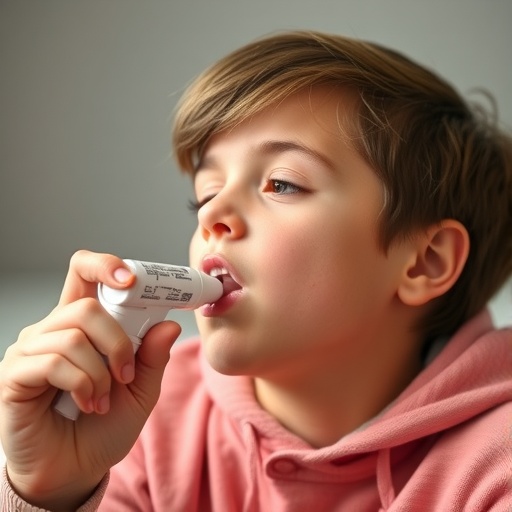In a groundbreaking shift in emergency medicine, researchers are exploring the potential of nasal sprays as a viable, needle-free alternative to traditional adrenaline injections for the treatment of anaphylaxis. This life-threatening allergic reaction conventionally requires rapid administration of adrenaline via intramuscular injection, often through devices like EpiPens®. However, a systematic review presented at the European Emergency Medicine Congress reveals that intranasal delivery of adrenaline could match or outperform injections in pharmacokinetic efficacy, safety, and patient usability.
Anaphylaxis, marked by severe allergic responses to triggers such as nuts or insect stings, demands immediate intervention to prevent fatal outcomes. The cascade of symptoms ranges from itchy, inflamed skin and angioedema to respiratory distress, nausea, and rapid cardiovascular collapse. Traditionally, administration of adrenaline through intramuscular injection has been the gold standard to counteract these acute symptoms. Yet, the invasiveness and practical challenges of injection devices, especially among those with needle phobia or inadequate training, significantly impact timely use.
Dr. Danielle Furness, a recent medical graduate and Foundation Year 1 doctor at the Royal Derby Hospital in the UK, conducted a meticulous systematic review comparing adrenaline delivery via intramuscular injections with emerging intranasal sprays. The review synthesized evidence from five international clinical investigations spanning Israel, Canada, Thailand, the USA, and Japan. Her analysis focused on the pharmacokinetics—specifically absorption rates, systemic plasma levels, and metabolism—as well as the safety profiles and practical considerations of both modalities.
Furness’s findings indicate that intranasal adrenaline formulations, available as both liquid and dry powder sprays, achieve absorption rates ranging between 2.5 to 20 minutes, surpassing the 9 to 45-minute window observed for intramuscular injections. Not only did nasal sprays demonstrate rapid systemic uptake, but they also attained equal or higher plasma adrenaline concentrations. Cardiovascular parameters such as heart rate and blood pressure remained comparable across both administration routes, underscoring the physiological safety of the nasal route.
From a safety perspective, the nasal sprays exhibited only mild, transient side effects, often resolving swiftly without intervention. This contrasts with the potential for injection-related complications, including tissue damage, pain, and the psychological barrier of needle use. The longer shelf life of nasal sprays, approximately two years compared to the 12-18 months typical for autoinjectors, coupled with their significantly smaller and more portable design, presents an added advantage for patients and caregivers alike.
An important practical consideration is patient compliance and ease of administration. Nasal sprays obviate the need for any needle use, thereby removing the prevalent issue of needle phobia that complicates EpiPen® usage. This innovation could substantially enhance timely administration of adrenaline in both community and out-of-hospital settings, potentially decreasing morbidity and hospital admissions. Physicians could find nasal sprays an invaluable additional tool to ensure faster delivery of lifesaving medication.
Dr. Furness emphasizes the necessity of rigorous real-world validation studies before nasal adrenaline sprays can be widely adopted. Establishing robust databases for post-market surveillance and encouraging clinical reporting about any treatment failures or adverse outcomes are critical to maintaining patient safety standards and confidence among healthcare providers and users.
Neffy®, recognized as the first intranasal adrenaline spray approved in the USA and Europe, has already gained regulatory acceptance from agencies like the UK’s Medicines and Healthcare products Regulatory Agency (MHRA). It represents the vanguard of needle-free emergency anaphylaxis treatments and is on course for availability in the UK by late 2025. Ongoing regulatory reviews and licensing efforts are underway in countries including China, Japan, Australia, and Canada, reflecting the global interest in alternative adrenaline delivery.
The review’s strength lies in its international scope and comprehensive evaluation of different nasal spray formulations, directly compared against the injectable standard. By assessing not only pharmacokinetics but also cardiovascular effects and side effect profiles, the research encompasses a holistic view of treatment viability. However, limitations such as small sample sizes, studies restricted to healthy adults rather than patients actively experiencing anaphylaxis, dose variability, and a lack of long-term safety data necessitate cautious interpretation.
Dr. Felix Lorang, head of the emergency department at SRH Zentralklinikum Suhl in Germany and member of the EUSEM abstract committee, contextualizes the research within clinical practice. He acknowledges the long-standing reliance on injection devices but highlights their drawbacks that may impede urgent intervention. According to Lorang, the needle-free nasal spray alternative could democratize adrenaline administration by simplifying use, reducing hesitation linked to fear of needles, and offering a more portable solution for patients.
Ultimately, shifting to nasal adrenaline delivery could revolutionize emergency treatment protocols for anaphylaxis, improving patient outcomes through faster, more accessible, and less intimidating intervention strategies. As further phase II and III trials emerge, supported by real-world evidence and pharmacovigilance, nasal adrenaline may soon be enshrined in national and international emergency medicine guidelines, heralding a new era in allergic shock management that merges efficacy with practicality.
Subject of Research: People
Article Title: Intranasal adrenaline in comparison with intramuscular adrenaline for adults with anaphylaxis: a systematic review of pharmacokinetics, safety, and efficacy
News Publication Date: 30-Sep-2025
References:
[1] Abstract no: OA063, “Intranasal adrenaline in comparison with intramuscular adrenaline for adults with anaphylaxis: a systematic review of pharmacokinetics, safety, and efficacy,” by Danielle Furness, European Emergency Medicine Congress (EUSEM 2025)
[2] Clinical studies referenced within the review from Israel, Canada, Thailand, USA, and Japan, with specific PubMed references accessible via linked studies.
Image Credits: Dr Danielle Furness
Keywords: Anaphylaxis, Allergic reactions, Allergies, Preventive medicine, Health care, Caregivers, Emergency medicine, Health care delivery




